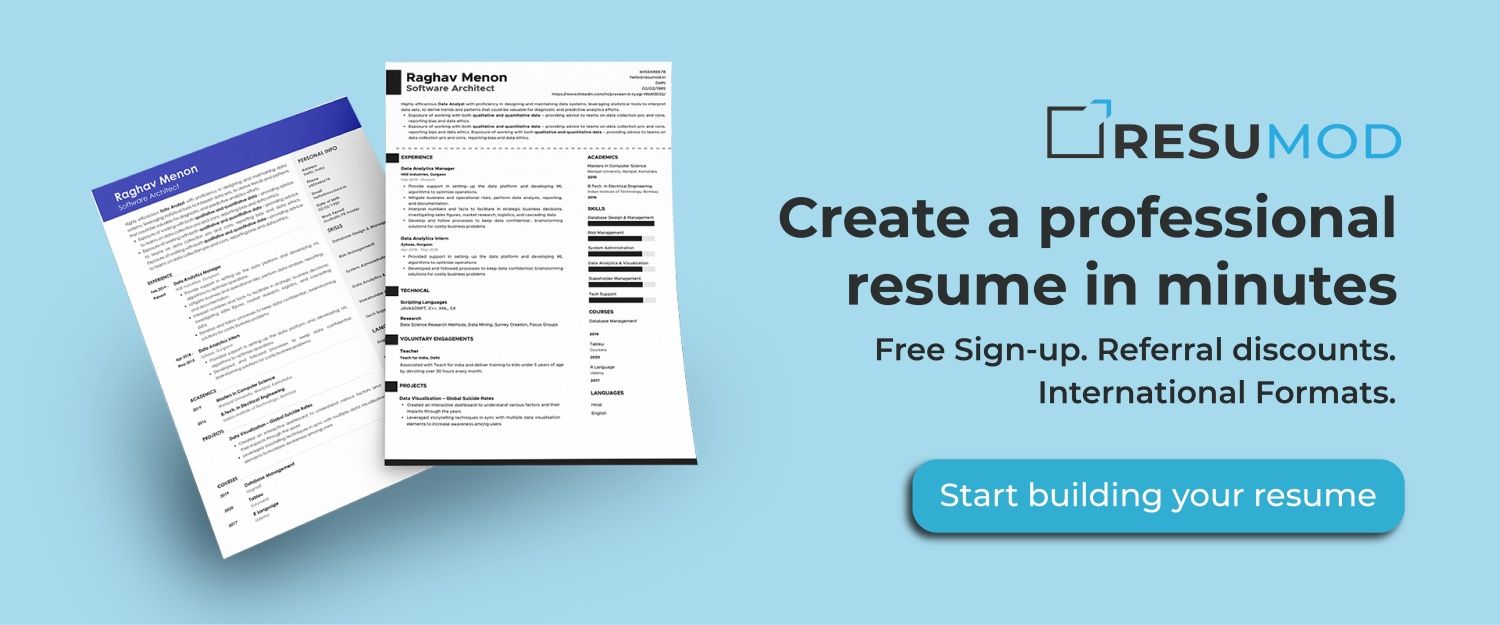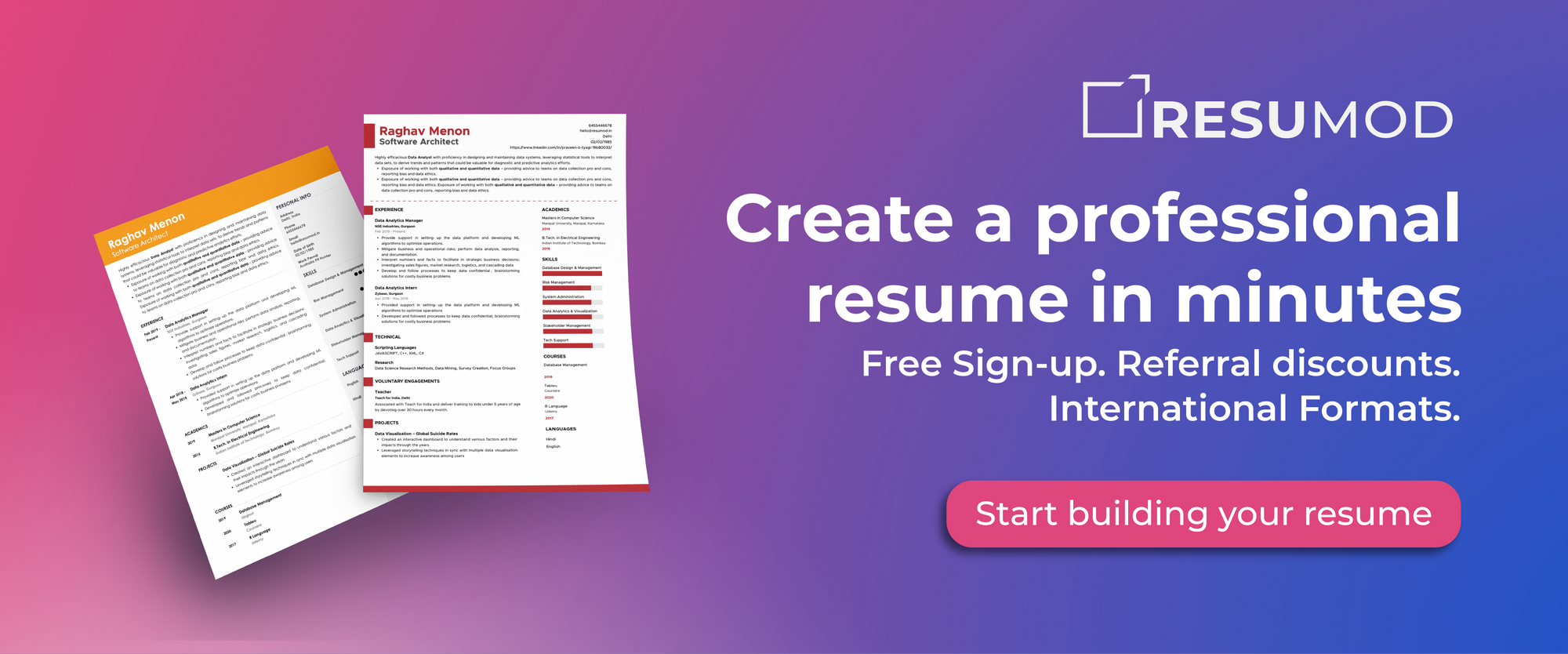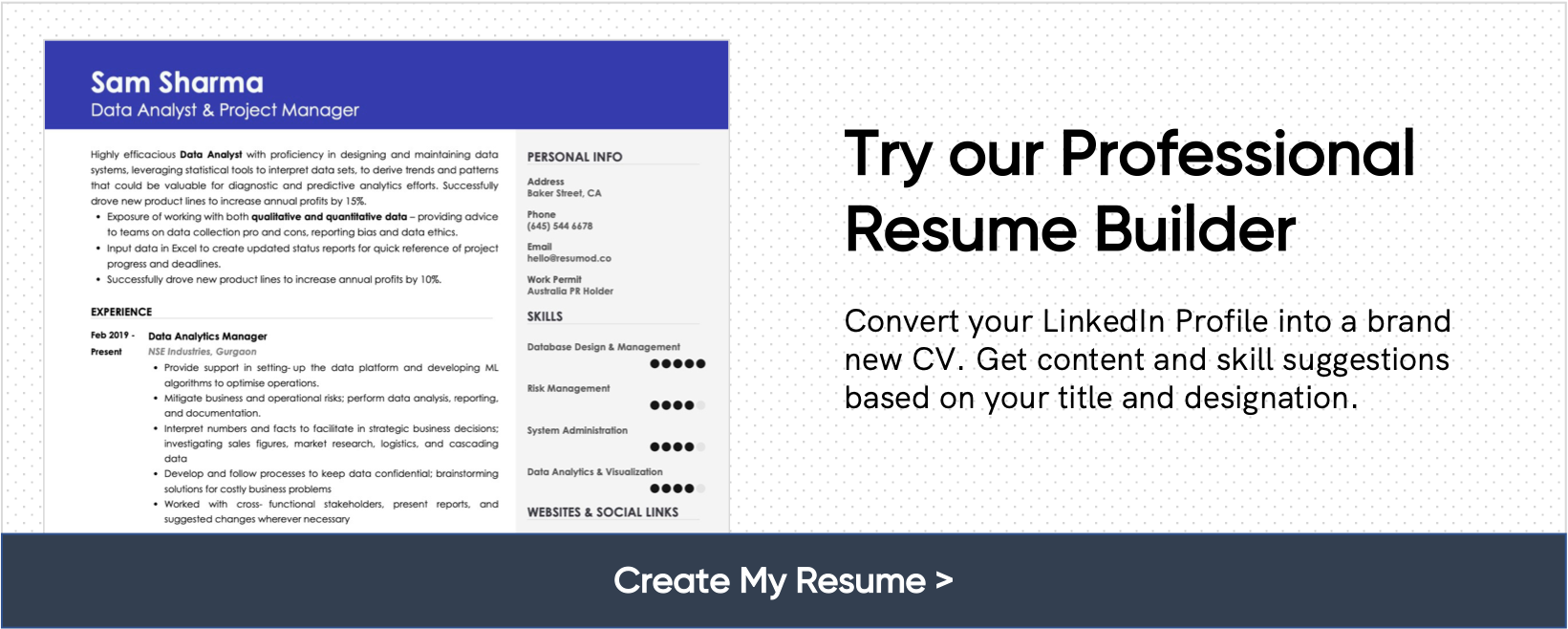The Ultimate Resume Checklist for 2025
Did you know that 73% of resumes are rejected simply because the work experience doesn't align with the job requirements?
This shows a harsh reality of the job market today. It's not just about what you've done, it's about how you present it. Even the most experienced professionals can find themselves overlooked if their resumes aren't strategically crafted to showcase relevant skills and accomplishments.
Listing past accomplishments on your resume isn't enough. You need to align your skills and experience with the job's specific needs. This shows you understand the role and how your expertise can help the company. By connecting your qualifications to the employer’s needs, you make a strong case for why you're the ideal candidate.
This comprehensive guide will help you craft a 2025-ready resume that not only bypasses Applicant Tracking Systems (ATS) but also powerfully conveys your value and expertise to hiring managers.
So, here’s the checklist that gets your resume noticed!
Professional Summary
This 2-4 line is your best chance to grab a recruiter's attention and compel them to read further.
Your resume's opening section is more than just an introduction—it's your brief summary to the recruiter.
Use this section to provide a brief overview of your experience, list your strongest abilities, or describe why you are a uniquely skilled professional.
Most importantly, ensure it’s tailored to the role. Mirror keywords and language from the job description to align with what the employer is seeking. This helps your resume pass the initial ATS screen.
Work Experience
This is the core of your resume. Your extensive experience is your biggest asset, so present it with impact.
- Use Reverse-Chronological Order: List your most recent role first.
- Focus on Accomplishments, Not Duties: Instead of listing responsibilities, use bullet points to showcase what you achieved. Start each point with a strong action verb (e.g., Led, Optimized, Launched, Transformed).
- Quantify Your Impact: Numbers grab attention. Where possible, use metrics to demonstrate your results. For example, instead of "Managed a sales team," write "Led a sales team of 15 to achieve a 25% increase in annual revenue."
- Be Concise: For each role, aim for 3-5 powerful bullet points. For older positions (10+ years ago), you can be more brief.
Contact Information
Your contact section should be professional and straightforward. It's the first thing a recruiter sees, so make sure it's perfect.
- Details to Include: Your full name, phone number, and a professional email address (e.g., FirstName.LastName@email.com).
- Tip: Use an email you'll always have access to, not a work-provided one that could expire.
- Online Presence: Add a link to your updated LinkedIn profile. If relevant to your field (like tech or creative roles), include a link to your online portfolio or personal website.
Skills Section
A dedicated skills section gives recruiters a quick snapshot of your capabilities.
- Categorize Your Skills: Create separate lists for technical skills (e.g., software, programming languages) and non-technical or soft skills (e.g., Leadership, Strategic Planning, Negotiation).
- Be Relevant: Curate this list for each application, highlighting the 5-7 skills most relevant to the target job.
Education and Certifications
Studies show that 72% of employers now practice skills-based hiring, prioritising skills over traditional credentials.
So, get started by:
- Keeping it Brief: List your degree, university, and graduation year. You can generally omit your GPA unless it's specifically requested.
- Reviewing job descriptions in your desired field to identify common qualifications and competencies.
- Utilizing professional networking platforms, such as LinkedIn, to observe the profiles of successful individuals in similar roles.
- Explore online resources, such as industry blogs, webinars, and certifications, to stay updated on current trends and in-demand skills.
Formatting and Design
A clean, professional design ensures your resume is easy to read.
- Choose a Simple Font: Stick to standard, machine-readable fonts like Calibri, Arial, or Helvetica in a 10-12 pt size.
- Use White Space: A cluttered resume is hard to scan. Ensure there's enough white space to guide the reader's eye.
- Maintain Consistency: Use the same formatting for dates, titles, and bullet points throughout the document.
Proofreading
Typos and grammatical errors can undermine your professionalism.
- Check and Double-Check: Run a spell-check, but don't rely on it alone.
- Read it Aloud: This helps you catch awkward phrasing and errors you might otherwise miss.
- Get a Second Opinion: Ask a trusted colleague or friend to review your resume for clarity and mistakes.
File Format & LinkedIn Consistency
The final steps are just as important.
- Save as a PDF: Always send your resume as a PDF unless another format is requested. This preserves your formatting across all devices.
- Align with LinkedIn: Recruiters will check your LinkedIn profile. Ensure your job titles, companies, and employment dates are consistent with your resume.
What Not to Include on Your Resume
Too much irrelevant or excessive information can dilute its impact and distract recruiters from your key qualifications. Remember, the primary goal of your resume is to secure an interview, not to tell your entire life story. If you're unsure whether something is relevant, it's best to leave it out.
Avoid including the following elements on your resume:
- Personal Details Beyond Contact Information: Never include your age, marital status, religion, or other personal details that could lead to bias.
- Exceeding Length Expectations: For most professions, one or two pages is sufficient. Resist the urge to overcrowd your resume, and instead, ensure information is concise and impactful.
- Unprofessional Email Addresses: Always use a professional email address. Avoid those that are overly casual or inappropriate.
- Irrelevant Work Experience: If the experience doesn’t relate to the role you're applying for, it’s best to exclude it unless it demonstrates a transferable skill.
- Long Paragraphs or Excessive Text: Stick to concise bullet points to make your resume more readable for recruiters.
- Hobbies and Interests (Unless Relevant): Only mention hobbies or interests if they directly relate to the job or company culture.
- References: It’s unnecessary to include references or "References available upon request." Employers will request them if needed.
- Negative Language: Avoid including reasons for leaving previous jobs or anything that could be perceived as negative.
- High School Information: Unless you're a recent graduate with no college experience, avoid listing your high school details.
Stripping away the irrelevant or unprofessional elements ensures a polished and focused resume that highlights your strengths and aligns with hiring standards.
Final thoughts
Crafting a strong resume is like designing a sleek, high-performance car: every component must be essential, finely tuned, and contribute to its overall power and efficiency.
Similarly when you tailor your resume to showcase your strongest attributes while removing unnecessary clutter, you set yourself up for success.
Just so you know that resume is a dynamic document that evolves with your career. So make sure to regularly review and refine it using this checklist, you'll always be prepared to grab your next job opportunity.
After all, a strong resume doesn't just list your experience, it tells a compelling story of your value.



